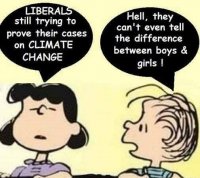The core argument of Trump and Zinke is that California’s forests are overgrown because those radical environmentalists have blocked forest-clearing operations such as logging. The result is a buildup of fuel that turns the forests into tinderboxes.
As my colleague
Bettina Boxall reported last week, overgrown forests may exist in some parts of the state, but that hasn’t played a role in the Camp or Woolsey fires, which have brought devastation and loss of life in Northern and Southern California in recent days. The fires have mostly swept across chaparral and grass, not forests. Indeed, “the wind-whipped Camp fire tore across areas that burned in 2008 lightning fires and were also later logged,” Boxall reported. “It is not fueled by heavy timber.”
The Woolsey fire, which has burned suburban areas from Oak Park to Malibu, was not near any forests, as
my colleagues Alejandra Reyes-Velarde and Joseph Serna observe.
Nor is the comparison to Finland apt. “Finland, perched far up in Northern Europe, could not be more different from California,” the
Finnish author Anu Partanen noted in a Times op-ed. “Overall it is a cold, wet and dark place. Finland’s landscape is dotted with lakes and swamps, which act as natural barriers to fire.” Finland’s climate bears little resemblance to much of California’s, which is periodically swept by hot, dry, desiccating Santa Ana winds.
Rainfall since May at Jarbo Gap in Butte County, near where the Camp fire started, was at 0.7 inches. During the same period, rainfall in Lapland, which suffered woodland fires this summer, was 15.76 inches.
This was not the first time that Trump referred to the necessity of clearing forests to stem wildfires. In August, following an earlier wildfire crisis, he
called in a tweet to “tree clear to stop fire from spreading.”
He also blamed “bad environmental laws” for preventing “massive amounts of readily available water” to be applied to the fires. However, fire officials maintained then that
there was no lack of water for firefighting.
In any case, California forest management policies aren’t as important in the state as federal policy. That’s because the
largest owner of forestland in California is the federal government, with 57%. State and local agencies own 3%. The rest is in the hands of Native American tribes, corporations or families (most of whom own fewer than 50 acres).
Trump’s fiscal 2019 budget called for a
decrease of nearly $1 billion in funding, or more than 15.5%, for the U.S. Forest Service, to $5.1 billion. (The Forest Service is part of the USDA.) Wildland fire management received a modest proposed increase of about 8%, but the proposed budget for fire suppression fell by 6% and a federal fire suppression reserve was cut to zero from $342 million.
Trump also proposed cutting the Forest Service’s capital improvement budget by nearly 74%, reducing it to $95 million from $362 million. That spending covered road building to provide recreational access for hunting and fishing and for first responders to wildland fires—exactly the projects that Zinke said should get
more funding.
At the Department of the Interior, Trump proposed
cutting the appropriation for wildland fire management by more than 11%, to $482.3 million, with a reduction in staffing by 161, a cut of nearly 5%. This appropriation covers the reduction of vegetation that can contribute to the severity of wildfires and programs for fire management science.
One shouldn’t be surprised at the stubborn resistance to empirical facts shown by Trump and Zinke, even after they saw the consequences of their own policies directly and heard from actual experts. Both have expressed skepticism about the impact of climate change, plainly a contributor to the length and severity of California’s fire season.



